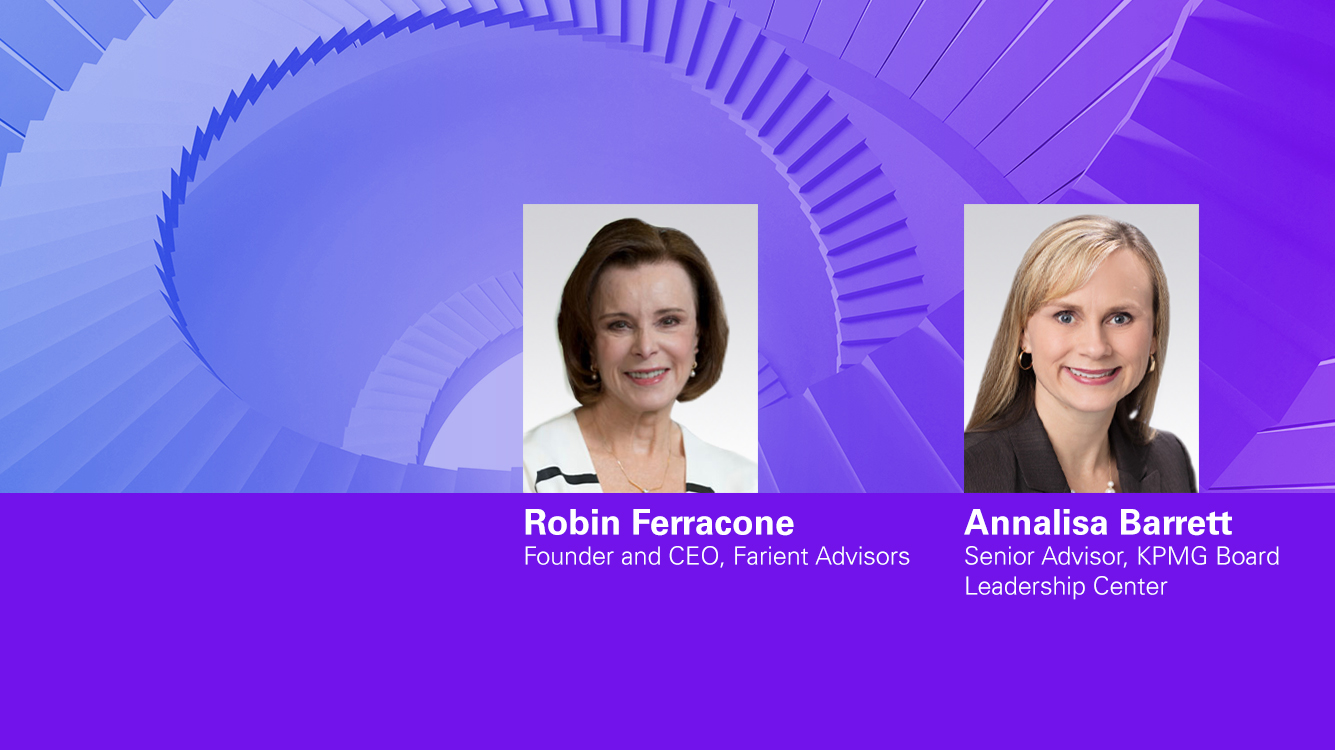Board governance
From the board’s role in strategy development and capital allocation to board composition and effectiveness.

Featured board insights and programs

Board oversight of GenAI
Key areas of focus and questions to ask as the board helps management prepare for the challenges and opportunities presented by GenAI.
Board Governance
Directors Quarterly: January 2025
Board and committee agenda priorities, financial reporting and auditing updates, post-election observations from around the world, and more.

On the 2025 board agenda
Nine issues for boards to keep in mind as they carry out their 2025 agendas.

Takeaways from the 2024 proxy season
Stephen Brown and Pamela Marcogliese discuss proxy season trends and takeaways for boards.

Learning by proxy
Highlights and trends from the 2024 proxy season

Directors Quarterly: July 2024
GenAI, climate-related disclosures, financial reporting updates, proxy season takeaways, an asset owner view on engagement, and more.

Board oversight of GenAI
Key areas of focus and questions to ask as the board helps management prepare for the challenges and opportunities presented by GenAI.

On the 2024 board agenda
The KPMG Board Leadership team discusses the critical challenges and priorities driving board and committee agendas in the year ahead.

On the 2024 board agenda: Private company considerations
What private company boards should keep in mind as they set their 2024 agendas.

Risk oversight: Reassessing board and committee structure
With the rapid expansion of emerging risks, boards are reassessing how best to structure board and committee oversight.

Staying in sync with internal audit and the chief audit executive
Staying attuned to the company’s changing risk profile has put a premium on internal audit being in sync with the audit committee.

- 1
- 2
- 3
Board Governance Video Insights
Receive the latest insights from the Board Leadership Center
Sign up to receive Board Leadership Weekly and Directors Quarterly







